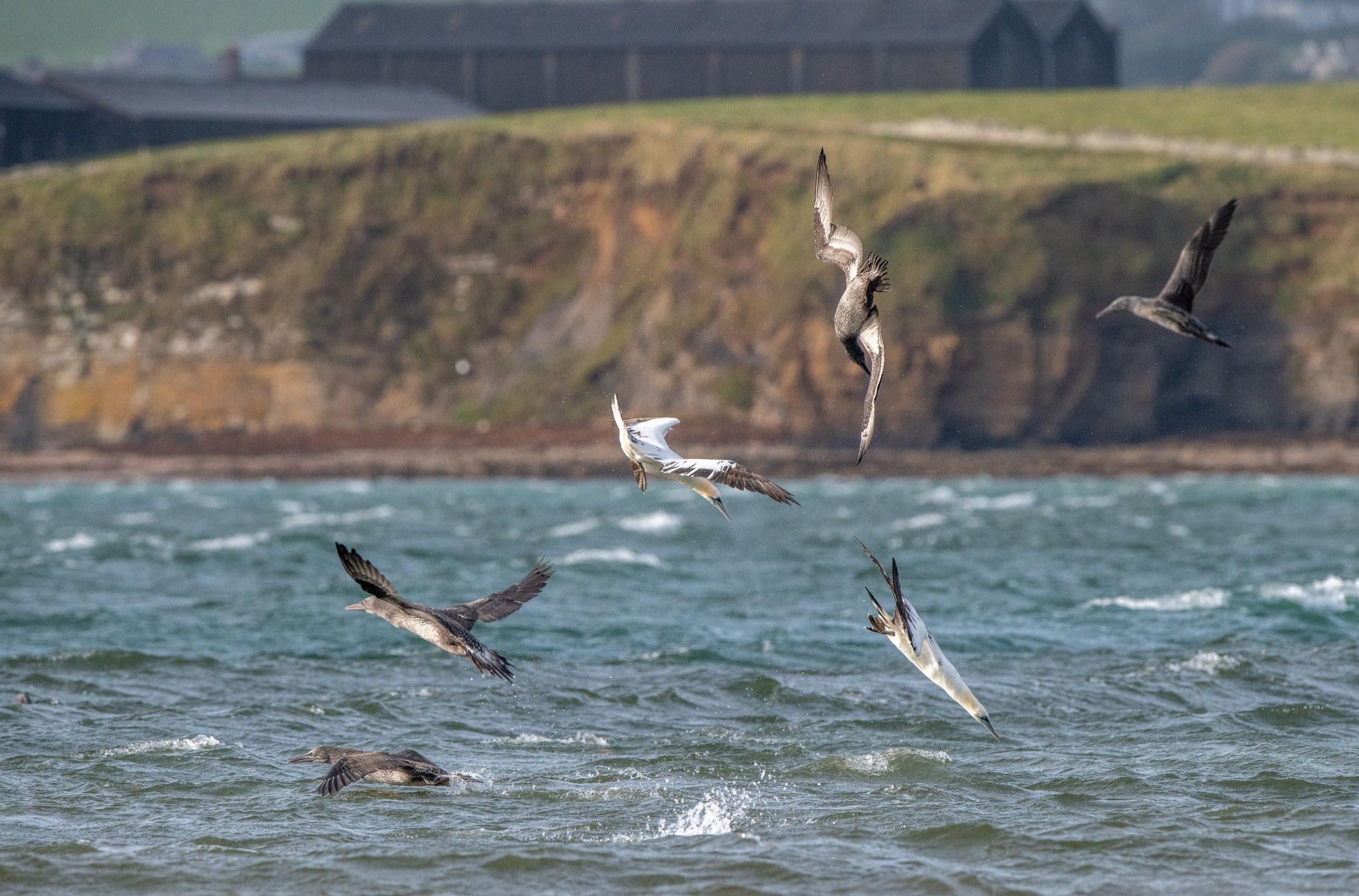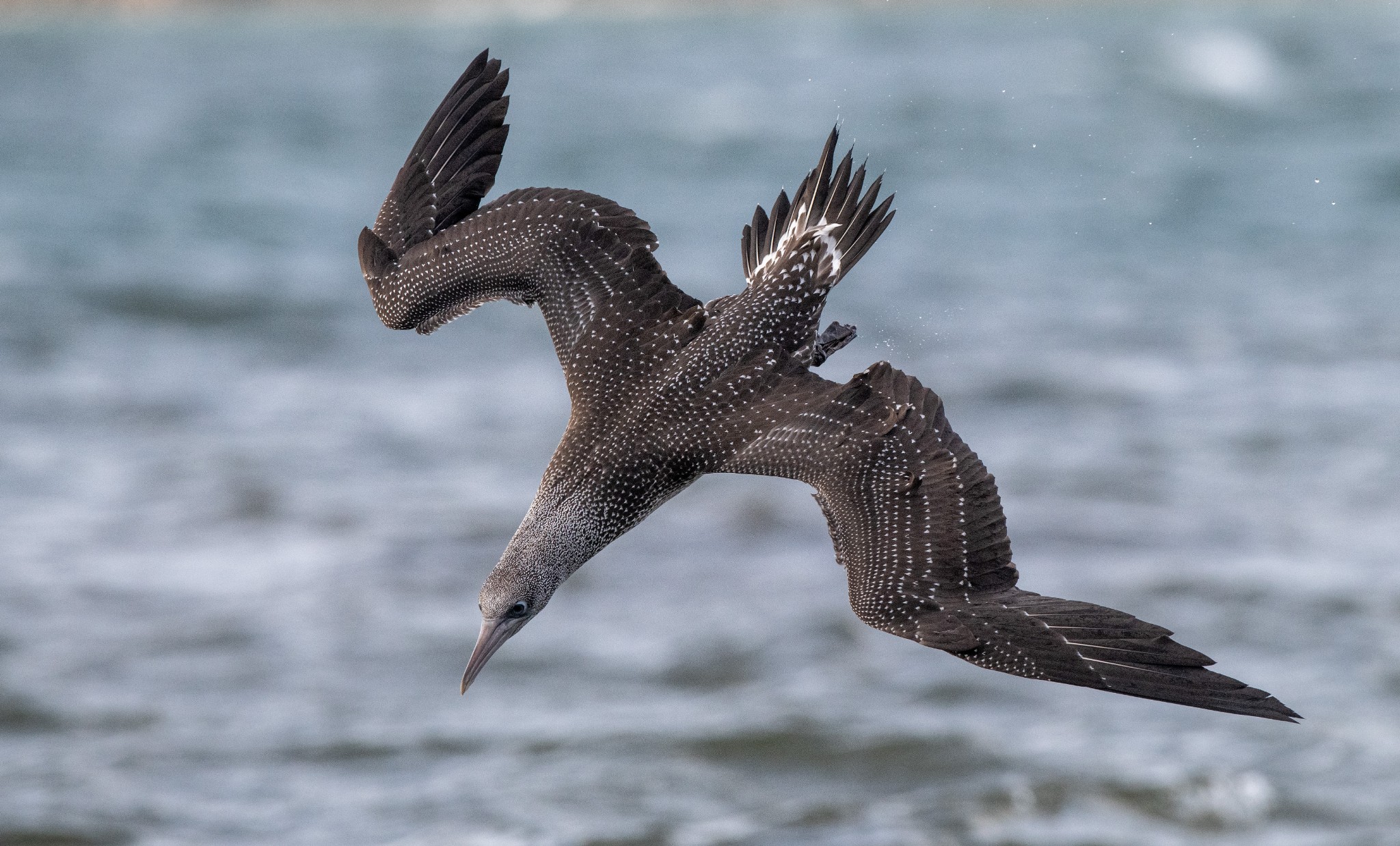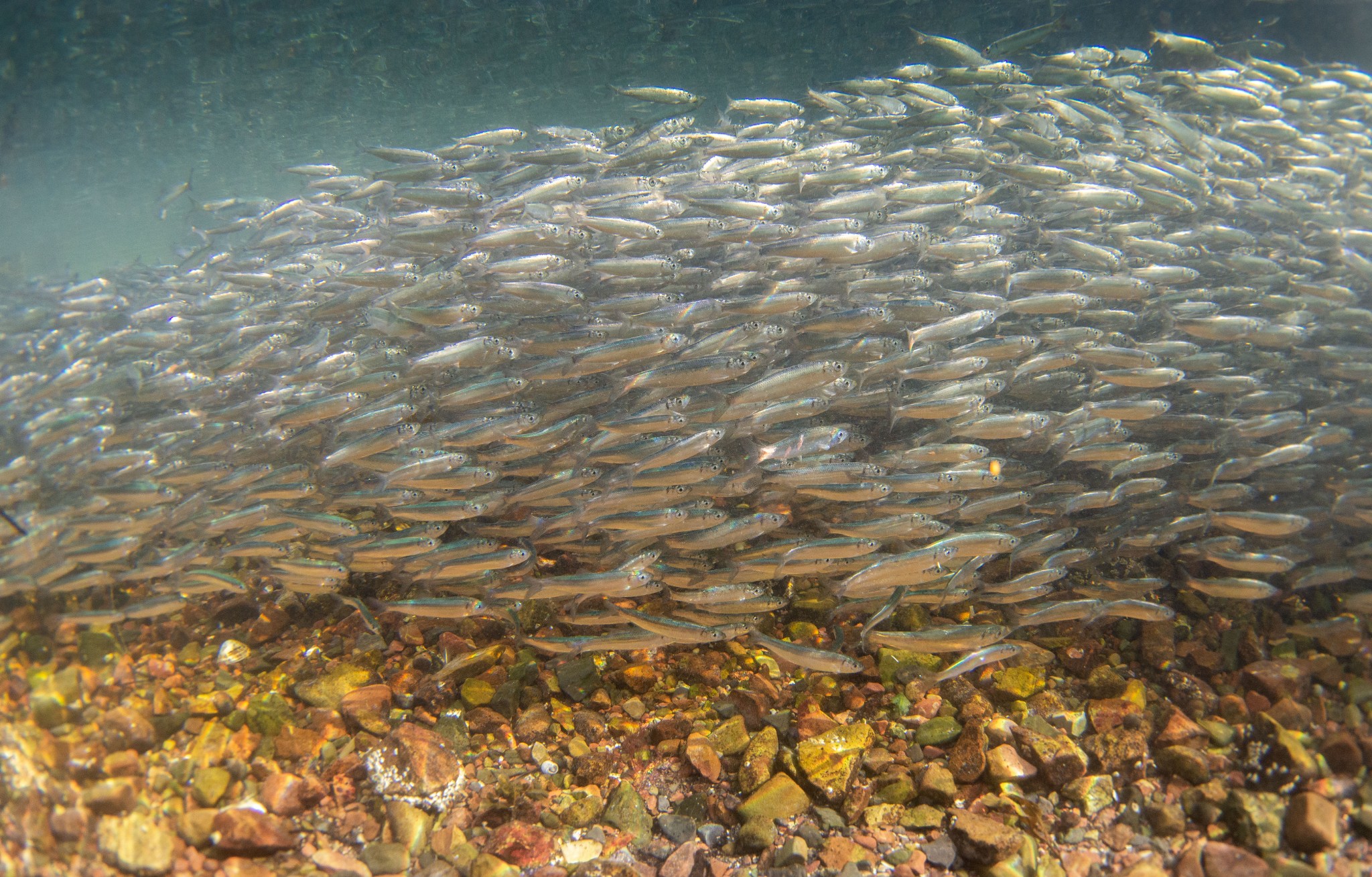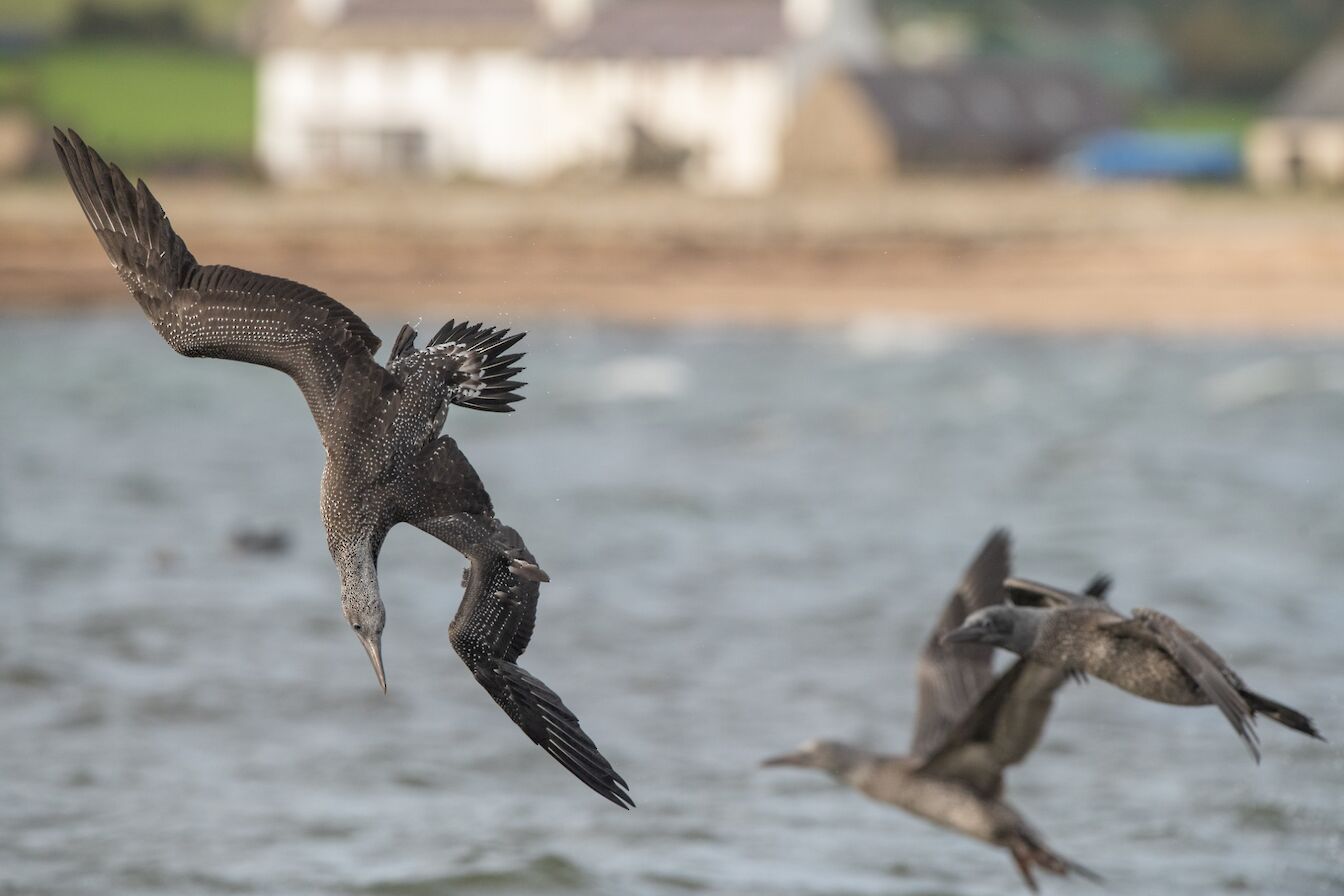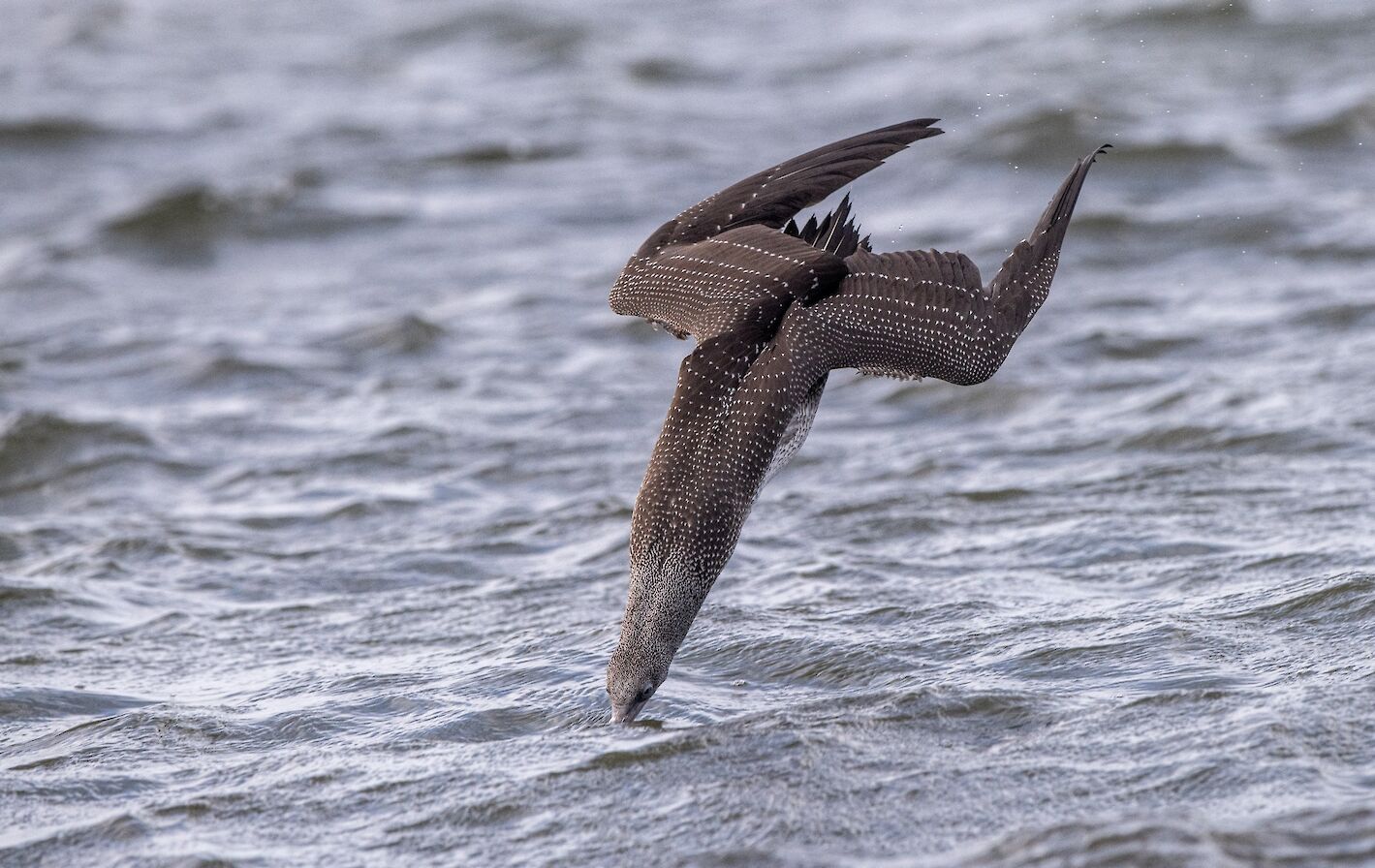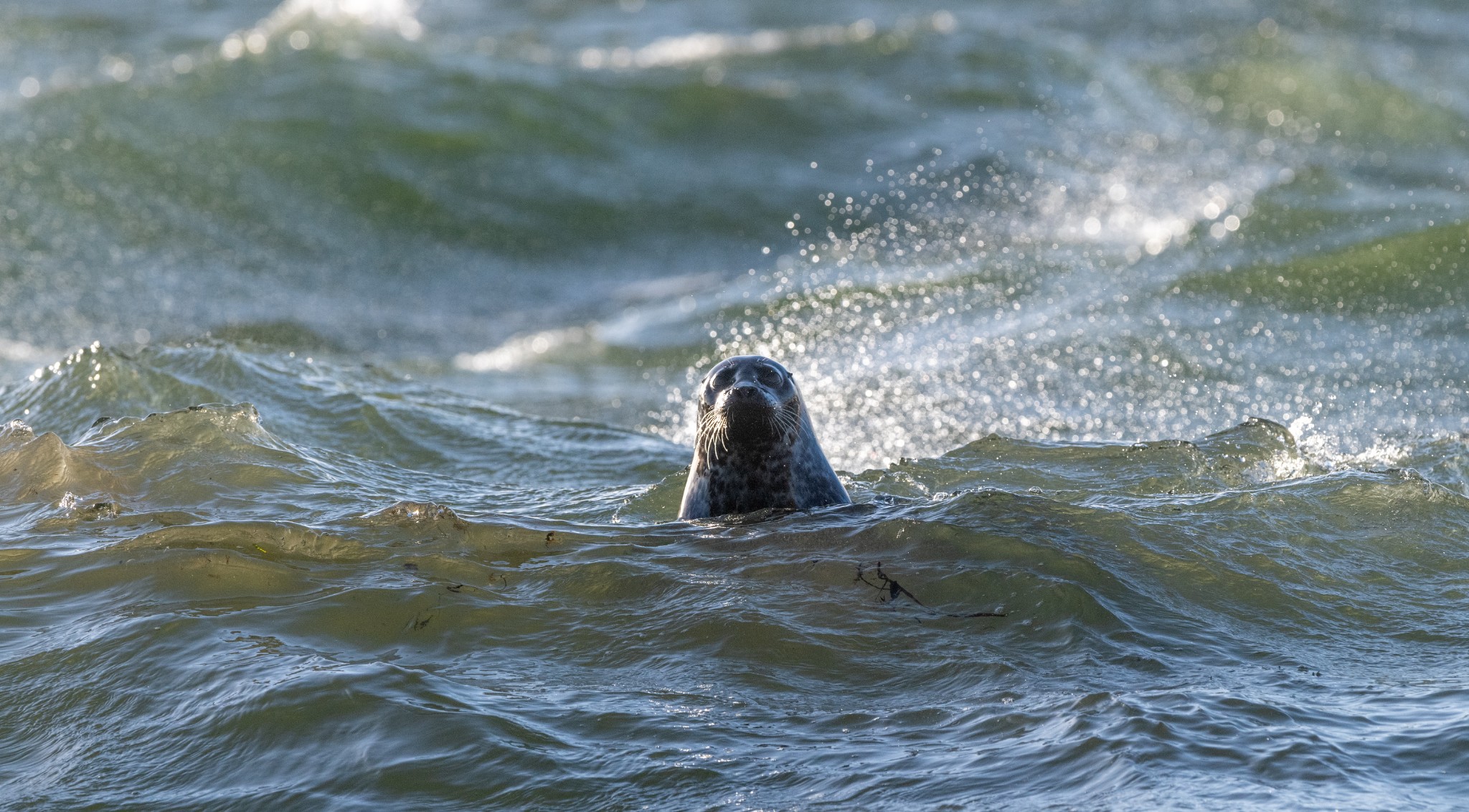The last time I saw a gannet at Scapa beach it was a sad sight. An adult bird barely able to raise its head, instead the soft orange plumage tucked into its wing as it succumbed to avian flu.
I could barely bring myself to photograph it such was the ache in my stomach and the lump in my throat as I watched this once supreme predator pass away in front of me.
Unfortunately, avian flu is far from gone and has decimated gannet colonies up and down the UK, but for now at least what I see here fills my heart. The scene in front of me is one of utter joy. Same species, same location.
It’s a bright and breezy day. The joke in our family is to describe the conditions as ‘fresh’ - our dad was a seafarer all his life and often understated the weather and the state of the sea with an “Aye, it’s a peedie bit fresh the day!”
And on these fresh winds are gannets, fresh from the nest, with 50 or more juvenile birds plunge diving into the sea. The wind is strong from the south west, and a large flock of mixed gulls are hanging almost motionless in the air next to the old harbour-masters house.
It’s going to be too windy to photograph comfortably here so I sit on the shore to the north of the pier in the lee of the wind, almost right on the water’s edge. I ditch my monopod and choose to shoot hand held. In duller conditions I wouldn’t be able to do this with a heavy 500mm lens but the bright light allows me to choose a high shutter speed and so avoiding camera shake. My aim is to capture the exquisite form and shape of these diving gannets as they enter the water. The main limiting factor here is going to be the strength of my arm and relenting to the fatigue.
The excellent autofocus system of the Nikon D850 also stacks the odds of success in my favour. I’ll admit the myriad of autofocus modes on modern DSLR and mirrorless systems can be a bit overwhelming, so for birds in flight I tend to use the AF-C 3D system. It takes a little bit of getting used to but it’s worth the effort. First, track your subject and press the shutter half way to engage the autofocus. The temptation here is to keep pressing the shutter to try and keep engaging the autofocus spots in the viewfinder but you don’t need to. Once engaged the system does the tracking for you and whilst not fool proof, it is astonishingly accurate.
One of the most difficult things in wildlife photography and also in my filming work is choosing to be bold. Close ups of birds in flight for example can be a difficult technique to master despite the tools at your disposal. My mindset here is basically one of ‘nothing ventured, nothing gained’ - some shots will work, some won’t, but I won’t know If I don’t try!
I’ve never had the opportunity to observe, let alone photograph, juvenile gannets at such close range. I’ve seen adults plunging into the sea at height and at speed offshore (from 20 metres in height to 60mph in speed), wings folded right back, a streamlined arrow penetrating the waves most likely in pursuit of mackerel, a favourite prey item.
But these juvenile gannets don’t need to reach such heights or achieve such speeds in order to catch their prey, and the prey is key to why I’m seeing them so close to shore.
Over the last few years, I’ve observed large shoals of fish coming right inshore at Scapa beach generally in the autumn, black masses darkening the water when viewed from the roadside sea wall.
The general consensus is that these will be herring or sand eels, but two years ago curiosity got the better of me and I donned my wetsuit and entered the water with them. At one stage the mass gathered around me so closely that I was engulfed by fish, a wall of silver movement. It was clear they weren’t sand eels but either herring or a very close relative, the sprat.
But how to tell them apart? The blue-ish hue on the back we associate with herring was there but sprat also have this. These fish were finger length, and herring generally grow to a larger size than sprat. So, were these sprats? They could just be juvenile herring!
There were one or two dead ones on the surface, no doubt damaged by a predator, so I took one back out of the water. There is a sure-fire way to tell the two species apart if you get such an opportunity. Run your finger along the keel (belly) of the fish from tail to gills.
If it’s a smooth belly then it’s a herring. A jagged belly that catches your finger means it’s a sprat. As my finger bumped its way towards the gills, I knew this was a sprat. The mystery of the shoals was over!
Shoaling fish like these create ‘bait-balls’ in order to survive attacks from predators, aiming for safety in numbers, but they don’t stand much of a chance against these gannets. They simply rise from the water, sometimes only a few metres in height, then twist and turn on themselves, somehow managing to fold their wings in time to dive into the shoal. Time and again they do this, the flock moving as one as the shoal tries to escape further up the shore.
By now they are only eight meters away from me and it’s a thrilling sight. I have high speed capture engaged on my camera and rattle away in the hope of capturing the spectacle.
It’s now that I can really appreciate the breathtaking plumage of these juvenile birds. From a distance and in dull light they just look uniformly brown. But at close quarters and in good light they are so much more. The dark chocolate plumage appears matt-like, but on closer inspection there are thousands of small white triangle shapes giving the head a beautiful silvery sheen. The backlight shines through the white tail coverts as the wedge-shaped tail splays out as it dives.
They are noisy too, the coarse guttural ‘gurr gurr gurr’ noise adding to the melee. I’m astonished that they don’t damage themselves during this frenzy. Having been in the sea with these shoals I know the water is barely a metre in depth here. The evolutionary adaptations of these Gannets however have made them perfect for this type of hunting.
Forward facing eyes give them binocular vision allowing them to pinpoint their prey with accuracy. Not only that but they also have the ability to adapt the shape of their lens in a split second before entering the water - minuscule advantages in pursuit of the sprat. A dagger-shaped bill finishes the job. They enter these shallow waters not directly from above but at oblique angles, reducing the chances of injury with a suite of adaptations.
The skull is specially strengthened whilst the head and neck have elastic air sacs to help withstand impact. The nostrils are fused, preventing water from entering the sinuses. They gulp as they bounce back through the water surface after a successful dive and they don’t linger – they’re straight back into the sky as they take full advantage of the bounty on offer.
They aren’t the only predators here though, hundreds of guillemots fill the bay, and harbour seals are here too attracted by the easy picking.
I can see one or two white gannets further out, not adults but fourth year sub-adult birds who are still to shake the last of their brown feathers before adulthood proper. Gannets are long-lived birds so the hope is the population will recover from the ravages of avian flu. These juvenile birds however have a long way to go before they can produce offspring of their own, as it’s five years before they are sexually mature.
As I sit on the shore having almost exhausted the cards on my camera, I watch with some hope. The parents of these juveniles survived the 15 weeks it took to raise them and I envision them far out to sea, gliding the troughs of deep waves with their six-foot wingspan. Perhaps these individuals having gained some immunity of sorts.
Once they have taken as much as is on offer, or the sprat simply move on, these juvenile gannets will embark on their own journey - a 5000km one almost to the equator of West Africa. I hope they can leave the cruelest of diseases behind them and are given the time to turn from silver brown to purest white, gracing our towering cliffs again further down the line.
Find out more about Raymond’s work via his official website. You can also find him on Facebook, Twitter and Instagram.
